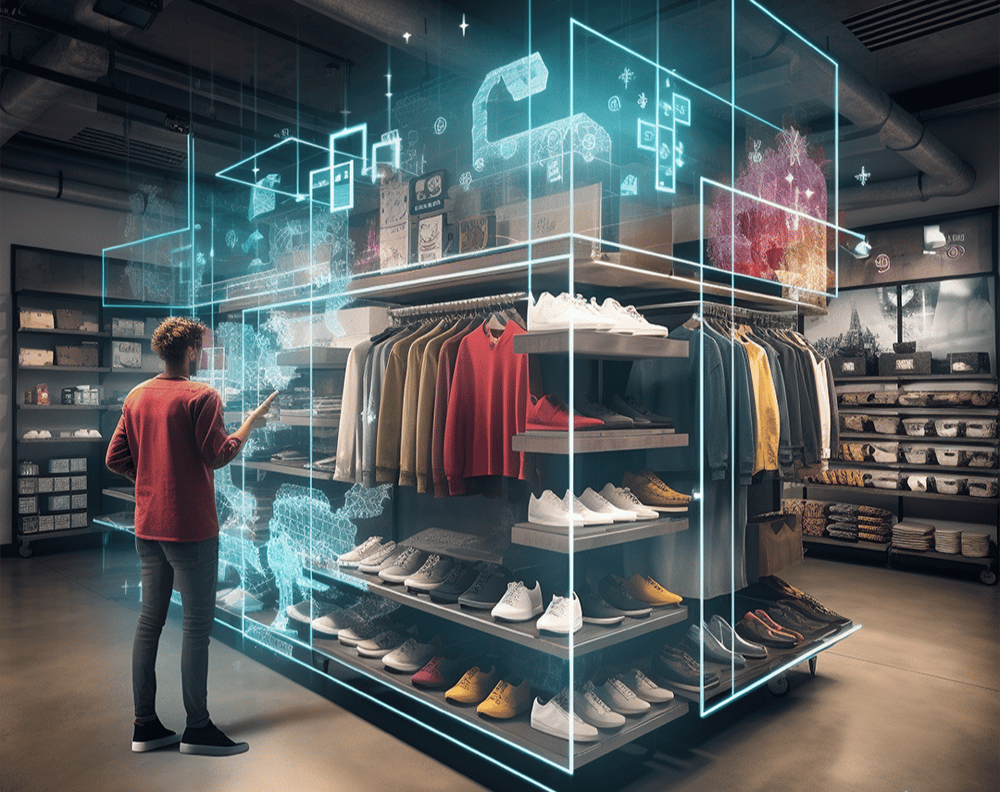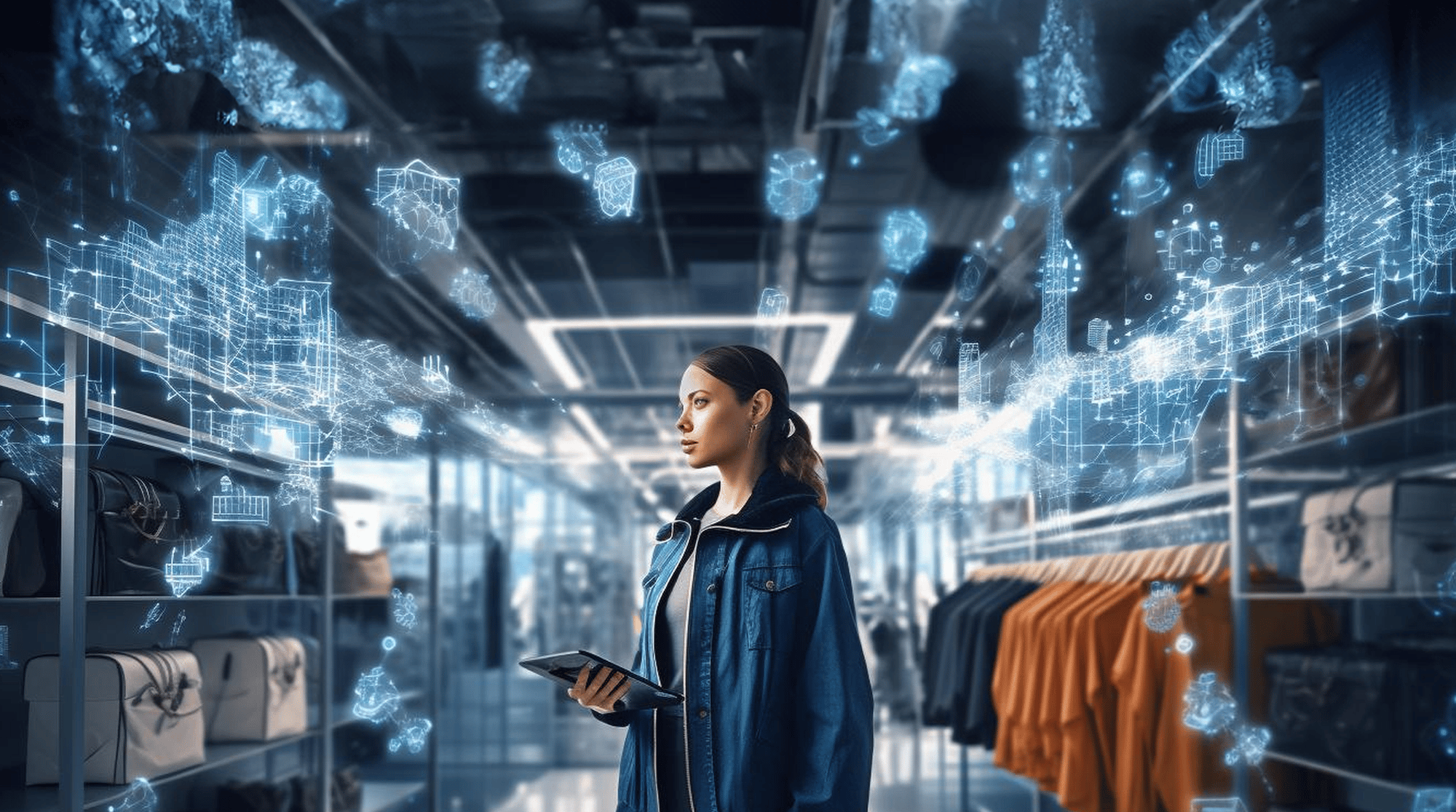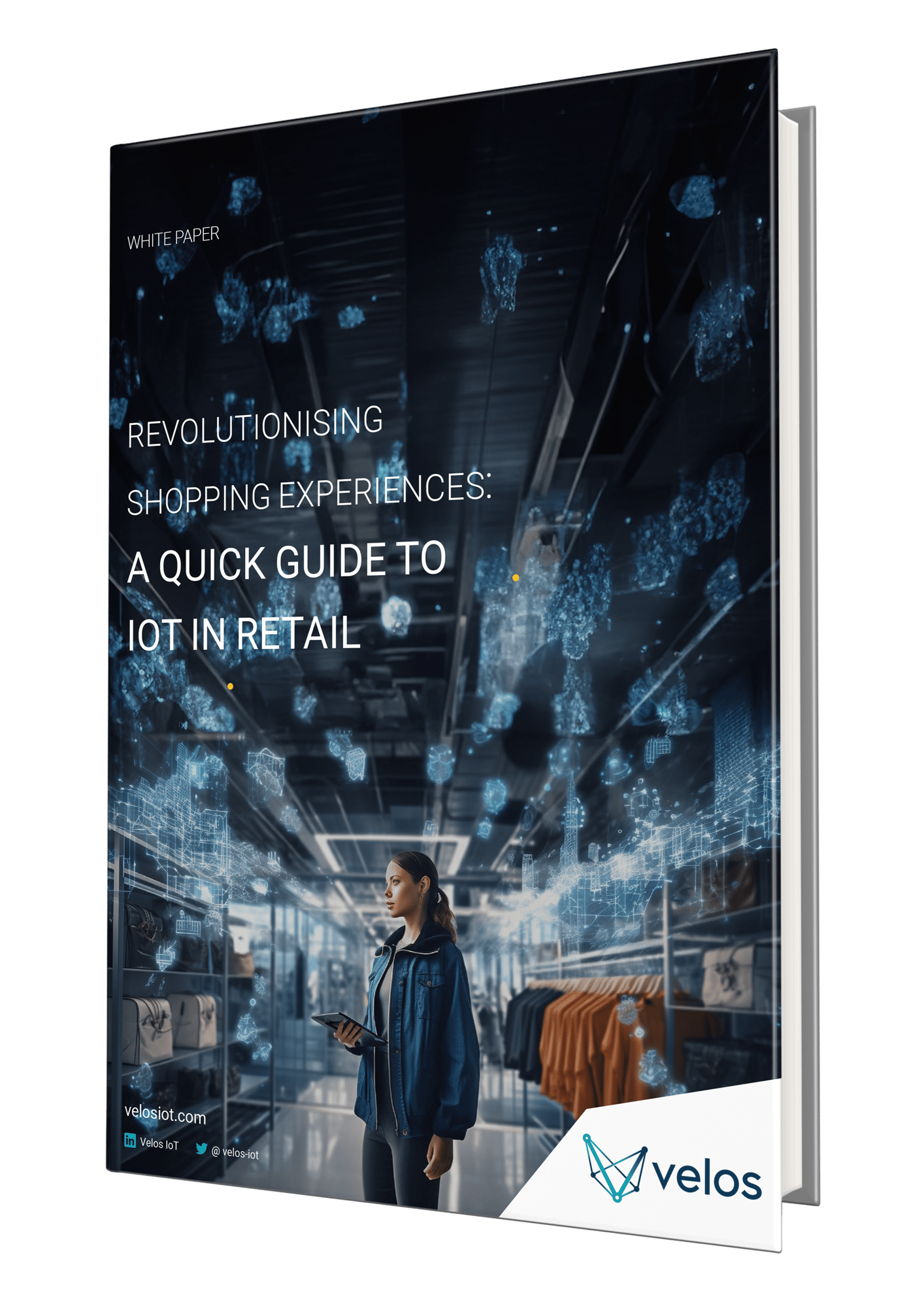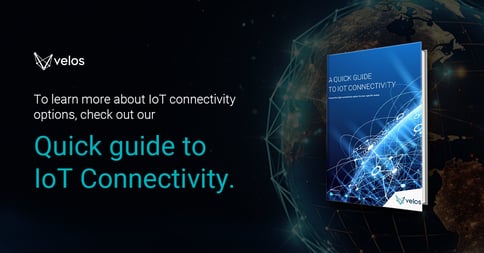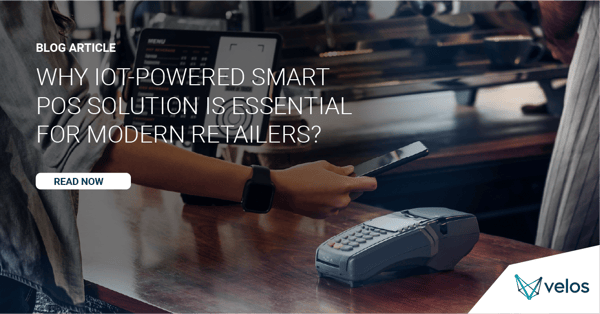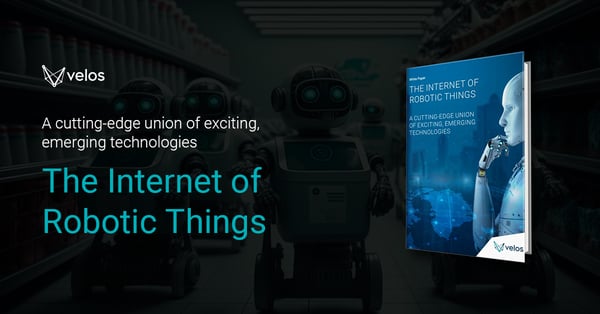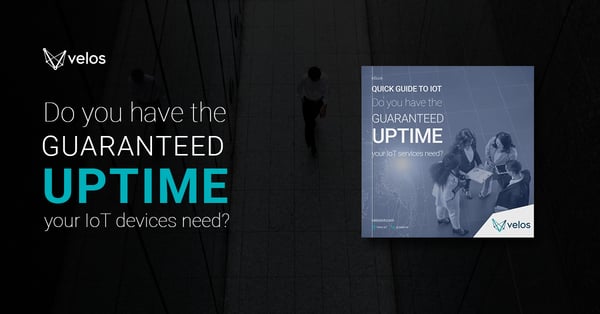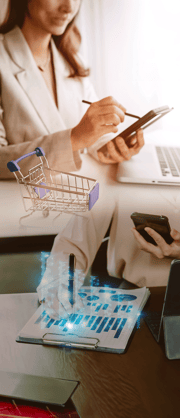Intro
Are you ready to transform your retail experience into a seamless, customer-focused marvel? Welcome to "A Quick Guide to IoT in Retail," where we unveil the game-changing power of the Internet of Things in transforming shopping as we know it.
Picture this: shelves that communicate inventory needs in real-time, checkouts that know your customers better than they know themselves, and data streams that paint a vivid picture of consumer desires. This is not a distant dream but a tangible reality shaping retail today.
In this white paper, we're not just discussing technology; we're exploring a revolution in customer engagement and operational excellence. Whether you're a small boutique or a large chain, the insights here are poised to redefine your approach to retail. Get ready to discover how IoT enhances and completely reimagines the retail landscape.
The integration of the Internet of Things (IoT) in retail is reshaping the industry by enhancing customer experiences and streamlining operations. There are over 14 billion connected IoT devices worldwide, and that number is expected to rise to 25.44 billion by 2030.

Transforming Customer Experience
One of the most significant applications of IoT in retail lies in customer management. Innovations like smart vending machines, smart shelves, queue management systems, and automated checkouts are revolutionising how consumers interact with products and services.
These technologies not only make shopping more convenient but also offer a personalised experience. For instance, smart shelves equipped with sensors can track product availability and consumer preferences. This can enable real-time inventory management and targeted marketing.
Advancing Operational Efficiency
In the realm of operations, IoT has been a game-changer. Integrating technologies such as Bluetooth Low Energy (BLE) and Near Field Communication (NFC) in retail simplifies payments and enhances in-store navigation.
BLE is known for its low power consumption and is ideal for retail environments with numerous devices. NFC has gained traction in expediting checkouts, especially during peak shopping periods like the pandemic.
IoT in retail also contributes significantly to operations management, including: 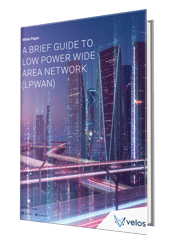
- Inventory management
- Supply chain automation
- Security
By leveraging IoT data, retailers can optimise supply chains, manage inventory more effectively, and improve overall security and safety. This can lead to cost reductions and increased retail sales.
Embracing New Technologies
Moreover, alongside cellular technologies like 4G, the rise of 5G technology is set to bolster the IoT landscape. With its high speed and low latency, 5G enables more advanced IoT applications, potentially transforming retail operations and customer experiences. The 5G IoT market is projected to soar to $55.1 billion by 2033, underscoring the technology's growing significance.
Addressing Challenges and Opportunities
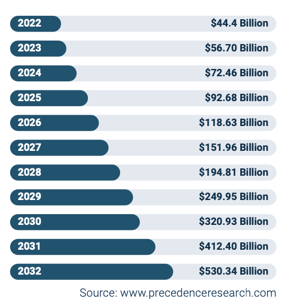 Despite the numerous advantages, adopting IoT in retail is not without challenges. The global chip shortage, for instance, has been a significant obstacle, slowing down the expansion of IoT. However, the secure Microcontroller Unit (MCU) market, essential for IoT devices, is expected to grow to $2.2 billion by 2026, indicating a rebound in the longer term.
Despite the numerous advantages, adopting IoT in retail is not without challenges. The global chip shortage, for instance, has been a significant obstacle, slowing down the expansion of IoT. However, the secure Microcontroller Unit (MCU) market, essential for IoT devices, is expected to grow to $2.2 billion by 2026, indicating a rebound in the longer term.
Retailers increasingly recognise IoT's benefits, with 94% acknowledging that its advantages outweigh the risks. This confidence is reflected in the projected growth of the IoT retail market. It's expected to reach about $92.68 billion in 2025and grow to $530.34 in 2032.
Common Use Cases of IoT in Retail
As technology continues to evolve, IoT will remain a driving force in the retail sector, heralding a future of seamless integration between technology and customer service. From automated checkouts and smart shelves to advanced inventory management and personalised marketing, IoT is transforming retail into a more efficient and customer-centric domain. Below are some of the most common IoT in retail use cases.
Automated Checkout
 Automated checkout solutions represent a significant advancement in retail, enhancing customer experience and operational efficiency. By eliminating the need for customers to wait in line, these systems improve the shopping experience and allow retailers to reduce staff costs and redirect their focus towards customer engagement and retention.
Automated checkout solutions represent a significant advancement in retail, enhancing customer experience and operational efficiency. By eliminating the need for customers to wait in line, these systems improve the shopping experience and allow retailers to reduce staff costs and redirect their focus towards customer engagement and retention.
Advanced IoT technologies, including RFID readers and barcode scanners, facilitate these self-checkout systems and enable customers to complete their purchases quickly and efficiently.
Smart Shelves

Smart shelves equipped with IoT technology, such as sensors connected with cellular networks and RFID tags, play a crucial role in inventory management. They automatically detect low stock levels or approaching expiration dates, which triggers alerts for restocking and helps reduce wastage.
This technology is pivotal in maintaining inventory accuracy by ensuring that products are available when customers need them and is instrumental in improving operational efficiency in retail stores.
Enhanced Customer Experience
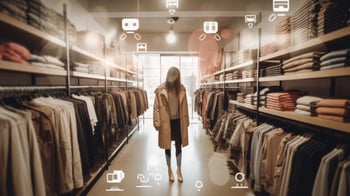 IoT in retail significantly enhances the customer experience through personalised marketing and layout optimisation. Retailers can:
IoT in retail significantly enhances the customer experience through personalised marketing and layout optimisation. Retailers can:
- Track customer movements within the store using wireless network technologies and beacons
- Gather data on shopping paths
- Analyse the time spent in different store sections.
This information is invaluable for optimising product placement and layout and influencing purchasing decisions. Personalised offers and promotions can also be sent to customers based on their location and purchase history.
Inventory Management
 Efficient inventory management is another critical application of IoT in retail. RFID tags, beacons, and CCTV cameras are used to gather real-time data to help retailers maintain optimal inventory levels and prevent stockouts.
Efficient inventory management is another critical application of IoT in retail. RFID tags, beacons, and CCTV cameras are used to gather real-time data to help retailers maintain optimal inventory levels and prevent stockouts.
Accurate inventory tracking is crucial for ensuring customer satisfaction and avoiding overstocking.
IoT-Powered Point-of-Sale Solutions
An IoT smart POS system uses advanced hardware and software to improve the point-of-sale experience for smart retail businesses.
These systems have a wide range of features and capabilities, incorporating advanced elements to create an enhanced retail solution. Key features of an IoT-powered POS solution include Real-time inventory management, business data security, simplified billing, big data analytics, customer relationship management, and multi-store management.
Smart POS solutions offer a multitude of benefits for modern retail businesses.
To learn more about IoT-powered smart POS solutions, read our blog article https://blog.velosiot.com/why-retailers-are-moving-toward-mobile-pos
Supply Chain Optimisation
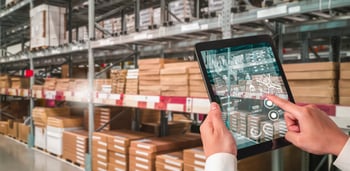 IoT technologies offer real-time tracking of products throughout the supply chain. Retailers can monitor the fleet location and condition of products in transit to ensure timely delivery and good condition upon arrival.
IoT technologies offer real-time tracking of products throughout the supply chain. Retailers can monitor the fleet location and condition of products in transit to ensure timely delivery and good condition upon arrival.
This contributes to improved supply chain management by ensuring efficient transport logistics and preventing product damage during transit. An IoT connectivity solution is essential to facilitate smooth transportation and logistics in the retail industry.
Retail Facility Management
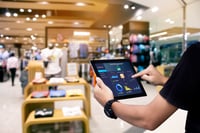 Retail facility management benefits significantly from IoT, with cellular-connected sensors monitoring various environmental parameters such as humidity, temperature, and occupancy. This data enables retailers to optimise resource allocation, like implementing smart lighting networks that adjust according to customer presence, thereby reducing energy consumption and operating costs.
Retail facility management benefits significantly from IoT, with cellular-connected sensors monitoring various environmental parameters such as humidity, temperature, and occupancy. This data enables retailers to optimise resource allocation, like implementing smart lighting networks that adjust according to customer presence, thereby reducing energy consumption and operating costs.
Marketing and Personalisation
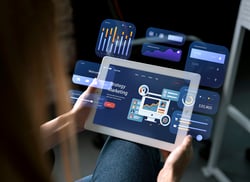 IoT plays a pivotal role in retail marketing by collecting consumer data through sensors and other connected devices. This data helps retailers understand customer preferences and tailor their marketing strategies accordingly.
IoT plays a pivotal role in retail marketing by collecting consumer data through sensors and other connected devices. This data helps retailers understand customer preferences and tailor their marketing strategies accordingly.
For instance, RFID chips, beacons, and IoT-connected sensors enable retailers to offer personalised experiences by promoting products and special offers more effectively.
Robotics and Retail Automation
 Robotics technologies are increasingly being leveraged in retail to enhance in-store customer service and warehouse management. Retail giants like Amazon and Lowe's have implemented autonomous robots for various purposes,including order fulfillment in warehouses and assisting customers in finding items in stores. This automation not only optimises business operations but also cuts costs.
Robotics technologies are increasingly being leveraged in retail to enhance in-store customer service and warehouse management. Retail giants like Amazon and Lowe's have implemented autonomous robots for various purposes,including order fulfillment in warehouses and assisting customers in finding items in stores. This automation not only optimises business operations but also cuts costs.
To learn more about robotics, check out our Robotics White Paper.
Key Components of IoT Systems in Retail
The Internet of Things is fundamentally transforming the retail industry, driven by a blend of hardware, software, and services that interact seamlessly to deliver an enhanced customer experience and improved operational efficiency. Let's get into the critical components of IoT systems in retail.
Hardware
Hardware forms the cornerstone of IoT in retail. It comprises various devices like beacons, RFID tags, sensors, and wearables. These devices are integral for:
- Tracking inventory
- Monitoring store premises
- Gathering data on customer behaviour and preferences
The adoption of these technologies is spurred by the decreasing costs of IoT sensors and an increase in the number of connected devices in retail outlets. As retailers strive to optimise operations and enhance customer experiences, the deployment of such devices is expected to expand further.
Software Platforms
Software platforms in IoT encompass three primary areas: connectivity management, application management, and device management. These platforms are the backbone that supports the integration and seamless functioning of IoT devices.
They can:
- Facilitate communication between devices and the central system
- Manage applications running on these devices
- Ensure that the devices themselves are operating efficiently and securely
Services
IoT services, including professional and managed services, are crucial for implementing and operating IoT in retail. These services range from repair and maintenance to training, helpdesk support, and installation.
Retailers often require custom solutions to boost productivity and efficiency. This makes these services indispensable for adapting IoT technology to specific retail needs.
Network Technologies
There are several network technologies that can be used for IoT in retail. Here are some examples:
- Cellular networks: Cellular networks, such as 4G and 5G, can be used for IoT in retail. They provide wide-area coverage and high-speed connectivity, making them suitable for applications like remote monitoring of stores, mobile point-of-sale systems, and real-time video surveillance.
- Wi-Fi: Wi-Fi is a commonly used network technology in retail IoT applications. It allows devices to connect to the internet and communicate with each other wirelessly. Wi-Fi can be used for various applications in retail, such as inventory management, customer analytics, and smart shelves.
- Bluetooth: Bluetooth is another popular network technology for IoT in retail. It enables devices to communicate wirelessly over short distances. Bluetooth can be used for applications like beacon technology, which allows retailers to send personalised offers and notifications to customers' smartphones based on their location within the store.
- Zigbee: Zigbee is a low-power wireless communication technology that is commonly used in IoT applications. It is suitable for retail environments where devices need to communicate over longer distances. Zigbee can be used for applications like smart lighting, temperature control, and asset tracking in retail stores.
- RFID: Radio Frequency Identification (RFID) is a technology that uses radio waves to identify and track objects. It is widely used in retail for inventory management and supply chain optimisation. RFID tags can be attached to products, enabling retailers to track their movement and manage stock levels more efficiently.
These are just a few examples of network technologies used in IoT applications in the retail industry. The choice of technology depends on factors such as the specific use case, range requirements, power consumption, and data transfer speed.
Deployment Models
Retail IoT systems can be deployed on-premise or in the cloud. On-premise deployment offers control over data security and privacy, reliability, and cost savings. This makes it a favourable option for retailers with extensive IoT infrastructures.
Cloud deployment is growing rapidly. It enables real-time analytics on data acquired by IoT devices and offers insights into:
- Buying Behaviour
- Store layout optimisation
- Staffing adjustments based on customer traffic
The Importance of Reliable Connectivity in IoT in Retail
Reliable connectivity in IoT is a fundamental requirement for retail success. It underpins every aspect of the customer shopping experience and is crucial for the operational efficiency of retail businesses.
As the retail sector continues to integrate more technology, the demand for dependable internet connectivity will only grow. This makes it an essential component of long-term strategy and operational planning in the retail industry.
Do you have the guaranteed uptime that your IoT devices need? Check out our eBook here.
Ensuring a Seamless Retail Experience
In the ever-evolving world of retail, the importance of reliable connectivity cannot be overstated. As omnichannel and unified shopping experiences become more prevalent, ensuring a seamless and high-quality shopping experience across all channels is critical.
Retailers that can successfully provide robust retail experiences across various touchpoints (e.g. ePOS or delivery) could significantly increase total revenue. This is because 90% of consumers now expect brands to offer omnichannel experiences across their preferred online and in-store channels.
Impact on Customer Experience
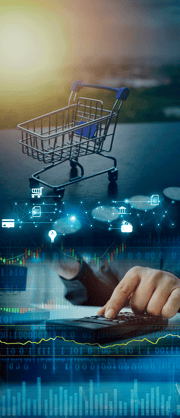 A slight reduction in connectivity can negatively impact how quickly payments are processed, increasing wait times at checkout, creating longer lines, and potentially discouraging customers from making purchases. The retail store of the future, which is becoming increasingly technology-intensive, will rely even more on high-quality internet connectivity as a cornerstone of a positive customer experience.
A slight reduction in connectivity can negatively impact how quickly payments are processed, increasing wait times at checkout, creating longer lines, and potentially discouraging customers from making purchases. The retail store of the future, which is becoming increasingly technology-intensive, will rely even more on high-quality internet connectivity as a cornerstone of a positive customer experience.
Challenges in Supply Chain Operations
Connectivity is also crucial for managing supply chain operations effectively. Retailers face challenges like:
- Geopolitical conflicts
- Inflationary pressures
- Workforce challenges that can disrupt supply chains
Embracing automation and innovative technologies for greater visibility and data-driven decision-making is essential. All these innovations demand resilient and robust connectivity.
Connectivity Solutions
Wireless technology is becoming increasingly important, especially for quick deployment. Retailers should not rely on a single connection but instead use a range of connectivity options for maximum reliability and resilience in their network infrastructure.
Bonded internet solutions that coordinate multiple connections into a single, aggregated pipe can deliver increased reliability. Combining 4G or 5G wireless connections with fixed-line resources can create a fully resilient solution. This ensures business continuity with limited downtime.
Deployment Models
The choice between on-premise and cloud deployment is vital for IoT in retail. On-premise deployment offers control over data security, reliability, and cost-effectiveness, especially for retailers with large-scale IoT deployments.
On the other hand, cloud deployment is gaining traction due to its ability to perform real-time analytics on IoT device data. It offers buyer behaviour tracking to optimise store layouts and product placements.
Benefits of IoT in Retail
The integration of IoT in retail is a driving force in transforming the industry by offering numerous advantages, such as enhanced customer experiences, improved inventory management, and increased operational efficiency. As technology continues to evolve, the role of IoT in retail will become increasingly pivotal as it enables retailers to remain competitive and adaptable in a dynamic market.
Enhanced Customer Experience
IoT in retail significantly improves the shopping experience by offering personalised marketing and optimising store layouts. Retailers utilise IoT devices to:
-Track customer movement-Gather data on foot traffic
-Understand shopping behaviours
This information is then used to create personalised offers and promotions, improving customer satisfaction and loyalty. Additionally, integrating technologies like virtual and augmented reality can enhance customer experiences by offering virtual fitting rooms and product visualisations to make shopping more interactive and engaging.
Improved Inventory Management
Smart retail IoT technologies like smart shelves, RFID tags, and sensors have revolutionised inventory management. These technologies provide real-time inventory tracking to ensure products are available when customers need them and reduce the risk of stockouts.
Automated inventory management minimises costs and reduces the likelihood of errors. It makes the inventory process more accurate and cost-effective.
Optimised Supply Chain
IoT provides real-time tracking of products throughout the supply chain, allowing retailers to monitor the location and condition of products in transit. This optimisation helps ensure products arrive on time and in good condition. This improves the overall efficiency of the supply chain and reduces waste, especially for perishable items like food and medicine.
Increased Operational Efficiency
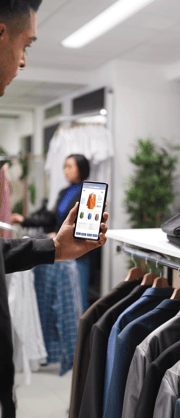 IoT enables retailers to streamline store operations, from restocking to energy management, to result in significant cost savings and reduced waste.
IoT enables retailers to streamline store operations, from restocking to energy management, to result in significant cost savings and reduced waste.
Smart IoT devices can track, monitor, and send alerts for sudden changes in environmental conditions like temperature, energy consumption, and more. These all contribute to energy management and efficiency.
Data-Driven Decision Making
IoT provides valuable data on customer behaviour and preferences. It enables retailers to make informed decisions regarding:
-Store layout-Product placement
-Marketing strategies
By analysing this data, retailers can adapt to changing market trends and customer needs. This all results in increased income and competitive advantage.
Improved Security
IoT technologies like smart surveillance cameras enhance security measures in retail premises. These technologies help monitor and prevent theft to ensure a safe shopping environment for customers and protect the retailer's assets.
Contactless and Cashier-less Checkouts
IoT-driven checkout solutions streamline the payment process and enhance customer convenience. These include cashierless and contactless options. Technologies like an IoT-enabled POS system and sensors enable customers to enjoy a seamless shopping experience without waiting in long lines.
Location Tracking and Asset Management
IoT technology is used for location tracking and asset management in retail logistics. Retailers use IoT for:
- Tracking products during delivery
- Improving logistical transparency
- Locating workers and items within warehouses
This contributes to loss and theft prevention and enhances the overall efficiency of asset management.
Challenges in Implementing IoT in Retail
Implementing IoT in the retail sector presents several challenges that need careful consideration and strategic planning to overcome. Here's a breakdown of these challenges:
Security Concerns
Security is a primary concern when implementing IoT in retail. The vulnerability of IoT devices to cyber-attacks can compromise the entire network's security, including customer data.
Retailers must collaborate with IoT software developers to implement robust security solutions, such as:
- End-to-end encryption
- Secure passwords
- Regular software updates
Cellular IoT, which authenticates devices through SIM cards, provides an additional layer of security.
Coverage and Connectivity Issues
A reliable network connection is vital for the seamless operation of IoT devices. Coverage limitations, such as those inherent in WiFi, can restrict where IoT devices can be deployed.
To address this, retailers can utilise low-power wide area networks or cellular connectivity, which offer wider coverage and remote firmware updates.
Interoperability Challenges
Interoperability in IoT involves ensuring various devices and systems can communicate and work together effectively. In retail, this means integrating a wide range of IoT devices into a cohesive network. This includes inventory trackers and customer interaction tools.
However, the lack of standardised protocols and varying technologies often leads to compatibility issues. Retailers face the challenge of creating a unified IoT environment where different devices, possibly from various vendors, can seamlessly exchange data. Overcoming this requires a focus on universal standards and investment in flexible platforms that support a wide range of technologies.
Scalability Issues
As retailers expand their IoT networks, scalability becomes a significant challenge. The infrastructure may struggle to handle the increasing volume of data and number of device connections. This could lead to resource shortages.
Planning for scalable IoT solutions that can adapt to growing demands is crucial for successful implementation.
High Implementation and Ongoing Costs
The initial cost of implementing IoT technology can be prohibitive, especially for smaller retailers. Additionally, ongoing costs associated with maintenance, upgrades, and data management add to the total cost of adoption.
Retailers need to assess the return on investment carefully and may start with smaller infrastructure changes before advancing to more sophisticated IoT solutions.
Data Management and Analytics
Processing, analyzing, and interpreting the vast amount of data generated by IoT devices is a complex task. Retailers often lack the technical expertise to extract meaningful insights from this data. Engaging domain experts or third-party vendors with relevant IoT skills is essential for effective data management.
Integration with Existing Systems
Integrating IoT technology with traditional systems poses another challenge. Retailers must plan the integration process meticulously to ensure compatibility and seamless data exchange between old and new technologies. Flexible middleware solutions can aid in overcoming these integration challenges.
Workforce Training and Cultural Shift
Adopting IoT technology in retail often requires workforce training and a significant shift in organisational culture. Employees need to be trained to manage and maintain diverse IoT devices and systems effectively.
Privacy and Ethical Concerns
With IoT, retailers collect vast amounts of customer data, raising significant privacy and ethical concerns. Ensuring the security of this retail data and using it responsibly is paramount.
Retailers must navigate complex privacy laws, like GDPR, and implement strong data protection measures to maintain customer trust. Ethical use of data also involves transparency in how customer data is collected, used, and shared.
Revolutionise Retail with IoT
In an era where retail is rapidly evolving, embracing IoT can be your strategic game-changer. Velos IoT stands at the forefront of this transformation by offering much more than a quick guide to IoT in retail. We're all about unparalleled expertise and innovative solutions in IoT connectivity for retail.
Imagine harnessing the full potential of IoT to elevate your retail operations and customer experiences. Don't let this opportunity slip away. Contact Velos IoT today and consult with our experts to revolutionise your retail business.
